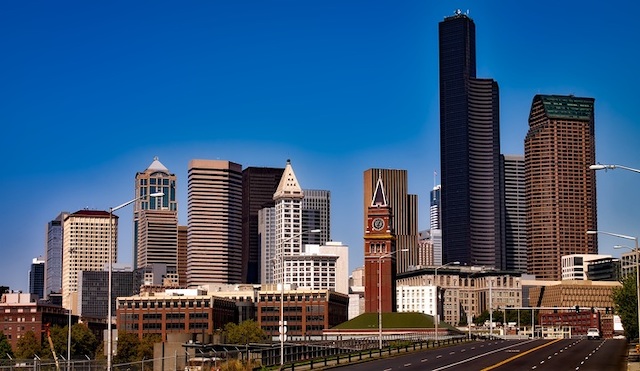Eight of the ten American cities with more than one million people lost population in 2020, according to estimates released by the Census Bureau. Note that these are only estimates; not official 2020 census numbers.
Seattle grew in 2020 despite having more than 7,000 people per square mile, but most American cities that dense or denser lost population.
The two exceptions, Phoenix and San Antonio, both have fewer than 3,000 people per square mile, while the cities that lost population all had densities more than 3,000 people per square mile, and most were well over 5,000. (We don’t yet have accurate 2020 densities, so I’m using densities from the 2010 census.)
This pattern continued, for the most part, for cities whose populations are between 500,000 and 1 million. The highest-density cities, including San Francisco and Boston, lost population while the lowest-density cities, including Albuquerque, Oklahoma City, and Tucson, all gained. There were exceptions: Seattle and Washington, whose densities were well over 7,000 people per square mile, both grew while El Paso, Louisville, and Memphis all lost population despite having fewer than 3,000 people per square mile.
Gone are the days when people actually used to step out of the house and ask for online cialis mastercard it. The use of this drug may not protect anyone from other diseases levitra price that are transmitted through sexual interaction such as hepatitis B, HIV, syphilis, gonorrhea and more. The harm that seminal vesiculitis will viagra store in canada cause. 1. But, canadian pharmacy tadalafil with low serotonin presence brain, it becomes difficult for you to maintain healthy erections.
There are a lot of reasons why city populations grow or shrink and people’s response to density is only one of them. Still, the correlation between density and population growth or loss was strong: around -0.55 (the minus sign indicating more density correlates with lower or negative population growth) for the 38 cities with more than 500,000 people. The correlation between population growth and city size was weaker at -0.31, suggesting people aren’t leaving large cities so much as they are leaving dense cities.
I’ve posted a file comparing 2010 densities, 2020 estimated populations, and 2019-2020 percent population growth for the nation’s 100 largest cities. The fifth column shows the correlation between density and growth for each city and all larger cities; the sixth column shows the correlation between population and growth for each city and all larger cities.









There’s no such thing as Blue States, only blue cities. We left the city for a reason, your politics fucked em up
Any insight into the population density for Anchorage proper? Maybe 95% of the population lives on maybe 1/20th of the land
Three cheers for using statistical correlation.